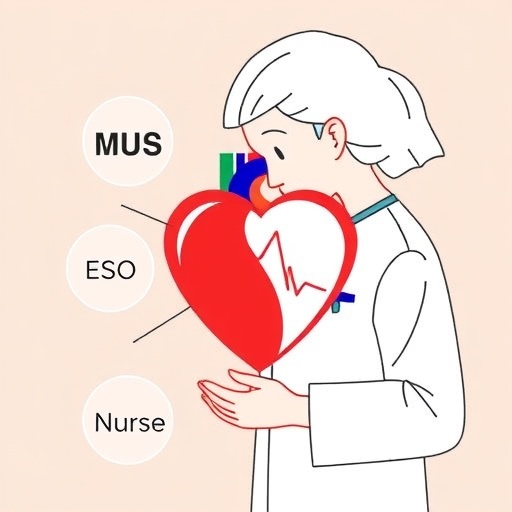In the dynamic landscape of oncology, researchers continually seek ways to enhance therapeutic strategies for conditions that remain challenging, such as recurrent epithelial ovarian cancer (EOC). A groundbreaking study led by Yuan et al. sheds light on the administration of poly(ADP-ribose) polymerase inhibitors (PARPis) in patients with recurrent EOC. This investigation unveils insights into how PARPis can be utilized in succession, providing a fresh perspective on treatment approaches.
At the forefront of this study is the premise that PARPis, which have shown promise in treating certain cancers, may yield even greater efficacy when administered in a sequential manner. The authors, Yuan, Wang, Yao, and their colleagues, embarked on a single institutional experience to explore this hypothesis. Their findings challenge conventional paradigms, sparking discussions within the scientific community regarding the potentials and pitfalls of sequential PARPi therapy.
Recurrent EOC presents a formidable challenge, marked by its complex biology and resistance to previous therapies. Current treatments, although beneficial initially, often lead to diminishing returns as the cancer re-emerges. This backdrop serves as a critical motivation for investigations like Yuan et al.’s, which seek innovative strategies to combat the resilient nature of this malignancy. The introduction of PARPis has already transformed the therapeutic landscape, particularly in BRCA-mutated tumors, yet questions remain regarding their long-term feasibility and effectiveness.
The concept of “PARPis after PARPis” is both intriguing and contentious. It raises questions about tumor heterogeneity and the potential for acquired resistance. By studying patients who have undergone multiple lines of PARPi therapy, the authors aim to delineate patterns of responses, resistance mechanisms, and potential biomarkers that could predict outcomes. This intricate analysis has the potential to guide clinical decision-making and shape future treatment algorithms.
Delving into the methodology, the study enrolled patients diagnosed with recurrent EOC who had previously been treated with PARPis. The authors meticulously documented treatment regimens, response rates, and progression-free survival outcomes. This systematic approach allows for a comprehensive understanding of how successive PARPi treatments impact the overall trajectory of EOC.
Statistical analyses revealed promising outcomes for patients receiving sequential PARPi therapy. The observed response rates indicate that, contrary to previous assumptions, cancer cells may retain some sensitivity to these agents even after initial treatments. This raises a compelling question: can the careful timing and choice of subsequent PARPis lead to sustained responses in a heavily pre-treated EOC population?
Alongside substantial clinical findings, the study also emphasizes the importance of molecular profiling in personalizing treatment plans. By identifying specific genetic alterations within tumors, clinicians may tailor PARPi therapy to enhance antitumor efficacy. Such an approach mirrors the burgeoning shift towards precision medicine in oncology, where treatments are increasingly based on the unique features of a patient’s tumor.
Moreover, the research underscores the necessity of collaboration across multidisciplinary teams in oncology. Oncologists, geneticists, and researchers must work in unison to unravel the complexities inherent in EOC and its response to novel therapeutic strategies. Such collaborative efforts are foundational in advancing existing knowledge and refining approaches to treatment.
The implications of this research extend beyond individual patient outcomes. By exploring the expected and unexpected outcomes of sequentially administering PARPis, the study contributes to a larger dialogue about treatment paradigms. As healthcare systems grapple with fluctuating resources and evolving therapeutic guidelines, understanding the most effective use of available drugs is paramount.
The authors’ findings invite oncologists to reconsider their strategies, potentially integrating sequential PARPi therapy into standard treatment protocols. However, it is essential to recognize that while these results are promising, they must be interpreted with caution. A thorough understanding of both benefits and risks is critical before recommendations can be broadly applied.
As the findings of Yuan et al. are disseminated, further research will be needed to corroborate these results and explore the feasibility of implementing sequential PARPi treatments in clinical practice on a broader scale. A robust framework for ongoing studies is necessary to establish clear guidelines and optimize treatment schedules for patients battling recurrent EOC.
In conclusion, the pioneering work presented by Yuan and colleagues marks a significant advancement in the understanding of managing recurrent epithelial ovarian cancer through the innovative use of PARPis. Their research not only highlights potential therapeutic strategies but also sets the stage for more extensive investigations into the mechanisms of resistance and response in cancer treatment. With the burgeoning interest in sequential therapies, the future of oncology holds promise for patients facing some of the toughest challenges in cancer care.
As we navigate the complexities of cancer treatment, the exploration of sequential PARPi therapy may illuminate new pathways in the fight against recurrent epithelial ovarian cancer, transforming how we approach this relentless disease for years to come.
Subject of Research: Sequential PARPi therapy in recurrent epithelial ovarian cancer
Article Title: PARPis after PARPis in patients with recurrent epithelial ovarian cancer: a single institutional experience
Article References:
Yuan, H., Wang, T., Yao, H. et al. PARPis after PARPis in patients with recurrent epithelial ovarian cancer: a single institutional experience. J Ovarian Res 18, 206 (2025). https://doi.org/10.1186/s13048-025-01786-0
Image Credits: AI Generated
DOI: 10.1186/s13048-025-01786-0
Keywords: PARPis, recurrent epithelial ovarian cancer, therapy, resistance, precision medicine, clinical outcomes





